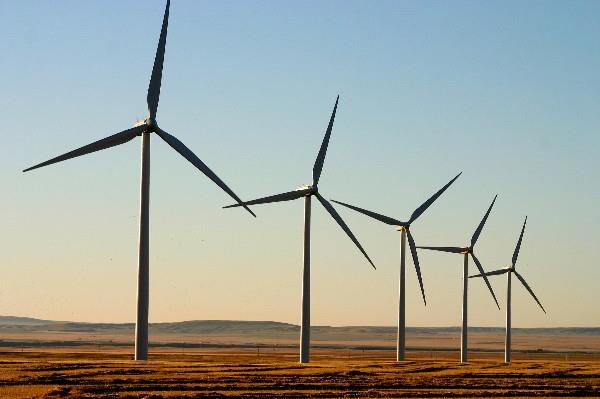
Facing uncertain future, fossil fuel workers want retraining in renewables
The need to look out for displaced workers is not unique to the U.S. — there is a lot of debate on the links between climate action and job creation. But what if the very fossil fuel workers politicians are trying to help want a different outcome?
Earlier this year, I interviewed two dozen Canadian oilsands workers who all want to retrain and build careers in the renewables industry. They are affiliated with a new workers' movement, , which exists to help them achieve this transition.
But the transition comes at a cost. Energy sector recruiters advise that they're likely to take a pay cut of up to 50 per cent.
So what are they thinking?
The power of the oilsandsSome context helps to understand the workers' stories. Alberta , making the oilsands integral to the way of life of .
THE CANADIAN PRESS/Jason FransonBut extracting crude oil from sand, water, clay and bitumen is expensive. For a new oilsands company to break even in 2016, it needed the price for a barrel of oil to be .
It has been half that since the end of 2014, and has only shown signs of upwards movement in the last month or two. Oil majors such as ConocoPhillips and ExxonMobil wrote off the value of their Canadian oilsands assets earlier this year, .
The impact on employment has been stark. in the oilsands in the past few years.
Still, when times are good in the oilsands, they are really good. So why would some seek to leave it behind altogether?
Change on the horizonWorkers' motivations for change fall into three categories.
First, the grind is gruelling. The typical rotation is three weeks on, followed by one week off. During that week off, workers often spend up to two days travelling to and from home. They're left with a few days to unwind and spend time with their families.
Second, the boom/bust approach to life can be unhealthy. During good times, workers may let off steam by leveraging an inflated salary to borrow money for expensive stress-relievers such as trucks, quad bikes and property.
Without adequate financial planning, households can find themselves facing liabilities that stretch them past the breaking point. It is a brutal reality that 2016 saw and .
Third, people are beginning to question their purpose. Few consciously sought out work in the oilsands, and many are now reflecting on whether the high salaries are worth the costs of uncertain employment and the time spent away from family. Some have become disillusioned.
The promise of renewablesIn this context, employment in the renewables industry has a lot to offer. In Alberta, it is in growth mode — its government has . Provided renewable technologies are not dependent on subsidies for the long-term, the industry should offer workers relative economic stability.
Many of the skills integral to the oilsands are directly transferable to the renewables sector. Installing solar panels requires electricians, building wind turbines relies on welders and locating and maintaining geothermal wells depends on drilling engineers.
There are anecdotal examples of workers making the transition, but we have yet to see a large-scale changeover. Oilsands workers can face stigma if they leave the industry and they may be wary of the risk associated with launching a new career.
There is also a challenge of the renewable energy firms' profound distrust for oilsands workers. With the salary differentials between the two industries, energy sector recruiters warn that renewables firms are concerned that experienced oilsands workers will return to their former roles when the oil price rebounds — leaving renewables in the lurch.
The case for interventionTens of thousands of Albertans are currently out of work. Worse, when construction projects triggered by the government's own renewables plan begin in 2018, job market experts believe there will be a major shortage of local skilled labour.
Other Canadians and immigrants will take the jobs that Albertans could have been trained to do.
Alberta plans to draw 30 per cent of its energy from renewables by 2030. (THE CANADIAN PRESS/Adrian Wyld)An assertive effort to lubricate the labour market could help. Alberta could offer a fiscal nudge to energy companies to retrain current workers. If the government were to back a labour market survey, it might pinpoint which skills and training programs are needed.
It's difficult to say if the views of the Canadian oilsands workers backing Iron & Earth are representative of fossil fuel workers around the world. But the point is most politicians can't say either.
The next few decades will see several deep transitions within our economies to address the formidable challenges before us. We need to ask more imaginative questions of displaced workers and listen to their answers. Judging by some of the loudest political narratives, we haven't been doing that.

Legal Disclaimer:
MENAFN provides the
information “as is” without warranty of any kind. We do not accept
any responsibility or liability for the accuracy, content, images,
videos, licenses, completeness, legality, or reliability of the information
contained in this article. If you have any complaints or copyright
issues related to this article, kindly contact the provider above.


















Comments
No comment